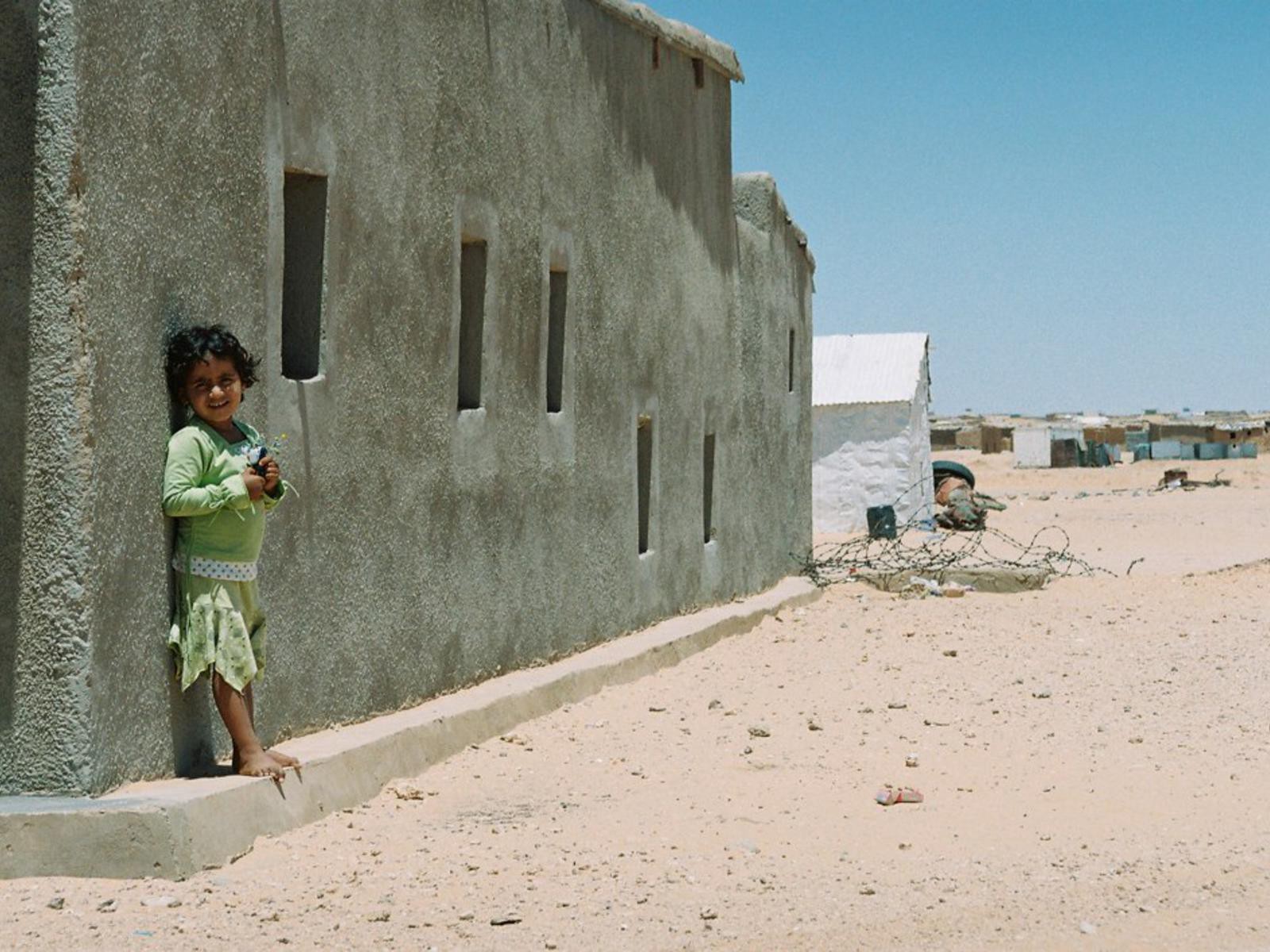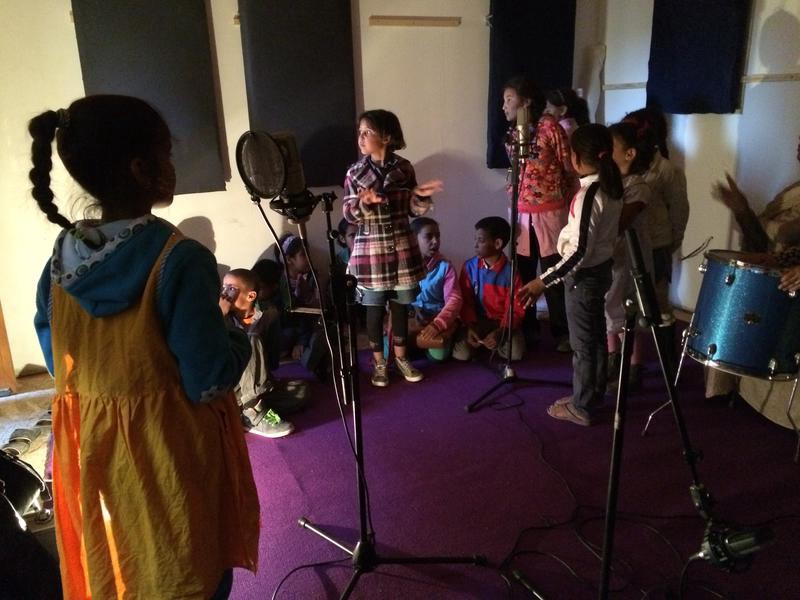

It’s the largest, longest-standing refugee camp you’ve probably never heard of. But a small recording studio–filled with tea, music, wires and song–could help change this.
Western Sahara, a mainly desert territory in northwest Africa roughly the size of New Zealand, is home to around 100,000 Saharawi refugees (the exact numbers are disputed and politically sensitive). The camps have been there for around four decades, after Morocco annexed the territory in 1975. The land is phosphate-rich, with extractable oil, too.
“It’s a large-scale conflict, a large territory. It’s not a small issue. Its [invisibility] is remarkable,” Danielle Smith, who has been working with the Saharawi refugees since the early 1990s, told me.
Frustrated by how few people seem to know about these camps, Smith ran the 2007 Sandblast Festival, bringing 25 artists from the refugee camps to the United Kingdom for a three-day event in East London that attracted over 2,500 people. This was all followed by a six-city tour.
“I was like, so nobody wants to talk about this. Fine. Let’s bring the issue here in a way that can engage people through the senses. Tell them the story through the arts–poetry, music, bring people in, interest them, open up their curiosity and get them asking questions,” said Smith.
The music was able to reach new audiences, making more people aware of the situation in Western Sahara in the process. And it got good reviews, too. People liked it artistically. It wasn’t simply a political experience.
On the run-up to the event, Smith and her team ran a competition to find the best representatives of Saharawi music, looking to form a group from all the different camps. They spent two years with them, building their repertoire and their identity, and recording their songs.
A bit like “American Idol,” perhaps? Sort of. Except not at all, really.
There’s the dust, for starters, and the extreme heat. The unstable power supply. There were also social and cultural considerations–how they paid people and what that meant culturally–and the rich and unusual history of Saharawi music.
As Smith explained, since the early 1970s music and poetry has been key to inspiring and engaging people. The Saharawis never really had a resistance music scene before that time but speedily realized its power. Smith refers to the research of Sandblast collaborator Violeta Ruano who explored Saharawi music for a Ph.D. at SOAS: According to Ruano, the leaders of the 1970s movement–mostly young students–transformed traditional songs to include lyrics reflecting their cause. These songs were performed in secret meetings, with a few recorded and distributed on smuggled cassettes.
“They’d hear one song, and it’d move them so much,” Smith said. “I’ve heard so many amazing stories where this guy would be drinking tea with his family and he’d hear this song and be like, got to go!”
Indeed, it was painful to select such a small number of people, and Smith didn’t want to simply remove all the talent from the camps. Music plays a key role within Western Sahara, helping residents to interact with the outside world. Surely there was a way to support Saharawi music for Saharawis and help them share something of their lives with the rest of the world?
So the group set up a music studio. Right there in the desert camps. It’s based in a music school run by the camps’ Ministry of Culture.

With a strong sense of the importance of sustainability, there’s a big focus on ensuring that everyone develops maintenance skills, too. “We’ve got solder kits and we [encourage] all of them to fix things, not throw them away,” Smith said. It’s about how to be inventive when it comes to the kit, as well as the music. There’s also a lot to learn about business, too.
And the latest plan? Get people from other countries to come and record in the camps.
“International artists who have a sense of solidarity and adventure, [who want] to do something in a different environment, who can support people but at the same time get the quality of music that they want,” Smith said–that’s who they want.
Speaking about one artist who recently returned from such a trip, Smith told me, “She came away saying, “‘I don’t want to record anywhere else on the planet. This is the most incredible place to be. I’d find any studio in London extremely boring.’ ” Local musicians collaborated at the recording, Smith said. “They really felt her music; they loved her voice, and then she saw her own music in a new light.”
Smith added: “It’s amazing how far music can take you, just the vibe when we were there. I was on the verge of tears.”


How We Get To Next was a magazine that explored the future of science, technology, and culture from 2014 to 2019. This article is part of our Fast Forward section, which examines the relationship between music and innovation. Click the logo to read more.
